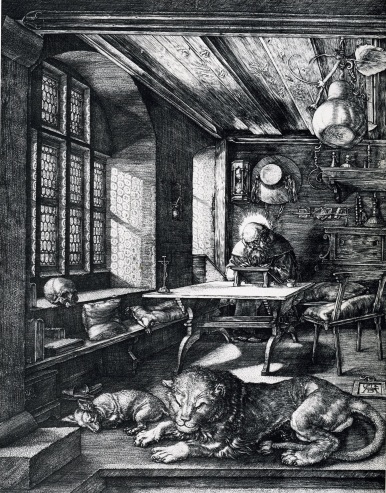
In my blogpost of September 18th, I spoke of Dürer’s engraving “St Gerome in his study”.
As I said this engraving is riddled with hidden images. As I can’t show the anamorphic ones properly (due to quality loss when I twist pictures, the effect never is what you see when you look at a good size, good quality twisted picture yourself), let’s focus on a portrait in plain sight…
On the left on the wall, there’s this grinning face looking in the direction of St Gerome (my marking on the second picture).
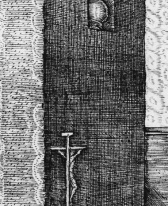
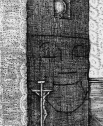
Never underestimate how subtle/refined these artists were able to work. Many, many engraved portraits of the Renaissance period have what appear to be plain backgronds, consisting out of lines, stripes or dots, but actually hold hidden portraits when looked at from the right angle. (So do the paintings)
Many engravings have hidden dimensions we’ve forgotten about. E.g. The wellknown engraving in Thomas More’s Utopia (3rd ed). The totality of the island, might be intended as an anamorphic, skull-like doubleportrait. But things start really making sense when you start rotating (as a book allows you to do): then an amazing cluster of overlapping anamorphic portraits appear. Like the strange double-portrait I’ve marked below, sharing noses and beards(Comparable to the double-portrait of Ernest Rousseau on the duneportrait that started this blog).

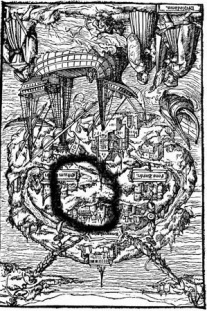
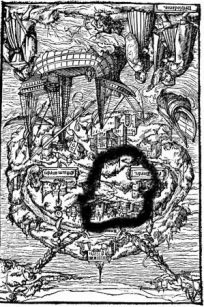


This engraving, by the way, was made by Ambrosius Holbein, son of Hans The Younger, the maker of the most famous anamorphic painting ever (I only found out who the maker is after I saw the anamorphic portraits).
But there’s more. When for instance you examine the following 1609 engraving of the Leiden Theatre of Anatomy – the benches of this theatre riddled with figures and skeletons in all possible positions – one wonders if there’s more to that. As one should when confronted with strange compositions in works from this period. And indeed there is more to it: looked at sideways large opposing hidden figures appear, probably 2 protagonists against and in favour of human anatomy.
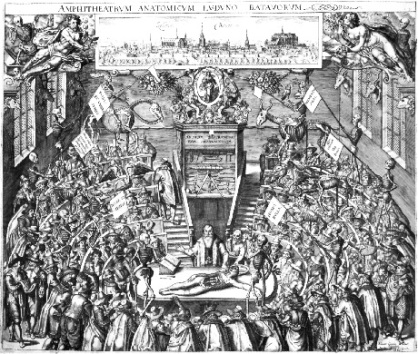
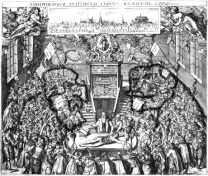
A similar thing you find in battle scenes: protagonists hidden in clusters of soldiers.
All of which you find in James Ensor’s paintings as well. Another important question is whether Renaissance still lifes hold hidden portraits too. James Ensor’s own still lifes did, and I’m quite sure he believed his Renaissance forerunners did the same. This is something I’ll have to look into in the future. The following paintings by Adriaen Adriaensen seems to suggest they indeed might:
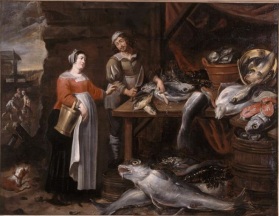
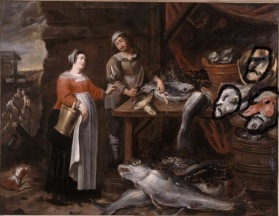

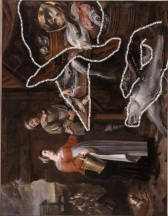
Having recently seen a list of artworks that Peter Paul Rubens owned, it occurred to me most of these are done by painters that by now I think of as leading figures when it comes to the use of visual trickery, like Raffael, Titian, Tintoretto, Dürer, and of course a lot of local painters (among them 17 paintings by Adriaen Brouwer, scholars wonder why that was). So I’m wondering to what extent Rubens and his pupils were familiar with and were using visual trickery. Another thing I’ll have to look into. Some works by Rubens suggest they did, like the following work, where a swarm of Rebelling Falling Angels seem to form the head of a crowned devil:
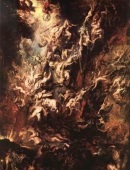


Which by the way seems to have a structure similar to his Descent from the Cross:

Etc…
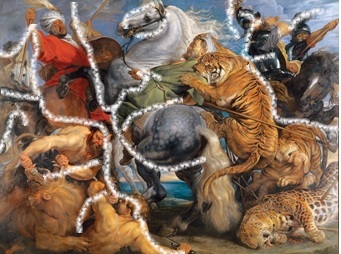


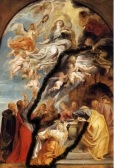
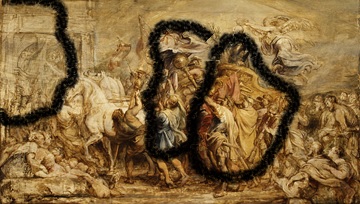
Rubens, known to have made the existing copy of Leonardo’s The Battle of Anghiari, (destroyed in 1560):
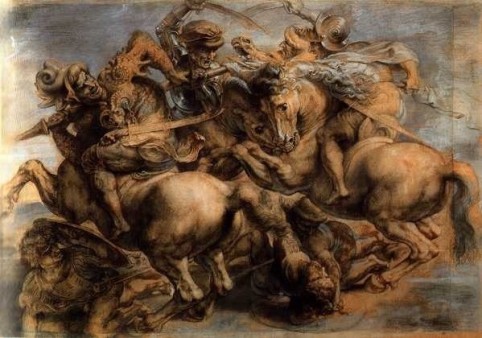
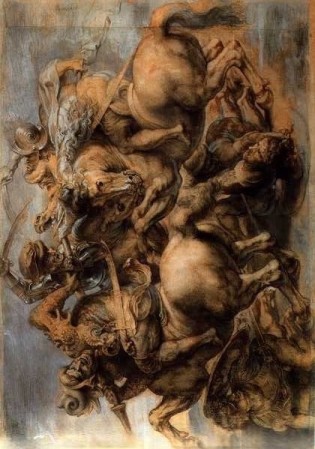
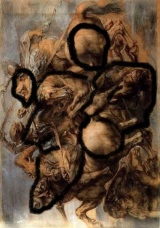

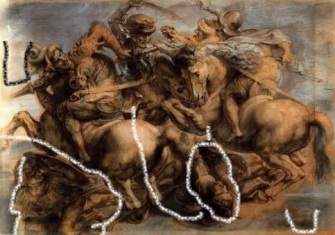
Visual trickery or not? Rubens’ study of an old man (Vienna), the beard holding an extra hidden portrait of this bearded man:
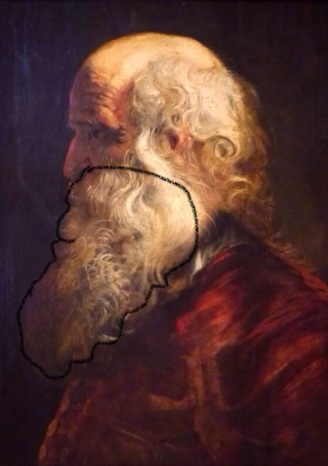
Check Leonardo’s self portrait. Are anamorphic portraits hidden from different viewpoints? (e.g. check eyes and eyebrows, seen from below)
“Some people see. Some people see when they are told. Some people see not.”
